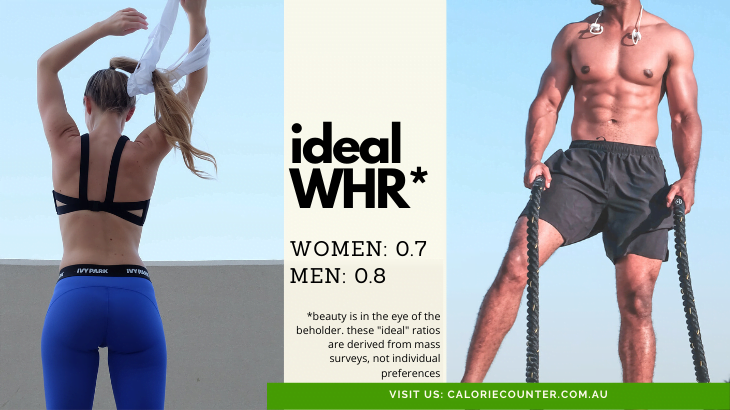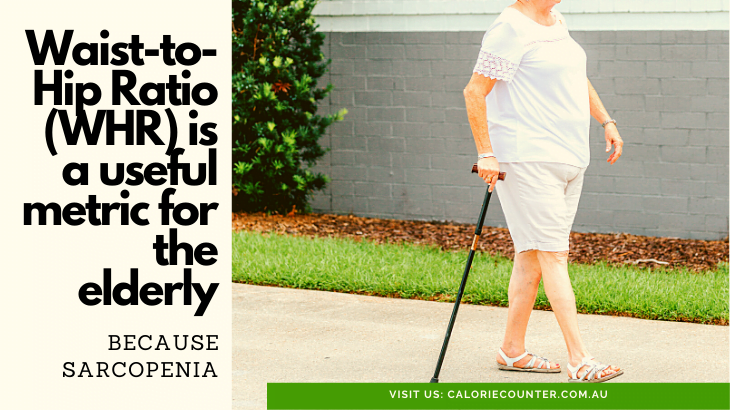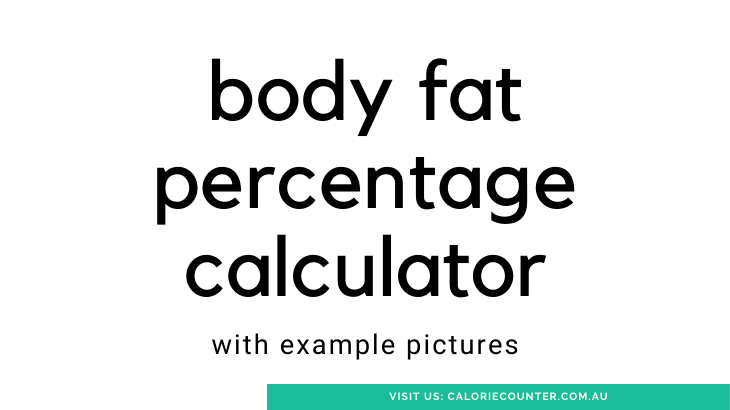Your waist to hip ratio (WHR) could be a better indicator of healthy body weight than body mass index (BMI). Find you current and ideal waist to hip ratio with this handy calcount WHR Calculator, then read on to learn more about this valuable health metric.
Simply enter the circumference measurements of your waist and hips in centimeters (cm) to calculate your waist-to-hip ratio.
Waist to Hip Ratio
Waist to to hip ratio is a measure of how much fat there is in the middle of your body, an area covering the waist, buttocks, and hips. It is an important measure because an increasing body of research supports the view that fatty mid-sections are particularly bad for health. Multiple studies find that people with central obesity (fat middle sections) suffer health risks even when they have normal BMIs. This is because fat which attaches to internal organs in the midriff is sensitive to hormones such as cortisol (a stress hormone). The fat disrupts healthy endocrine system function to increase the risk of type 2 diabetes and heart disease.
Calculate Waist to Hip Ratio (Formula)
To calculate waist to hip ratio, you need just two measurements: circumference of the waist (W), and the circumference of the hips (H). Divide W by H to get the ratio (R). Thus,
W / H = WHR
This calculation shows why it is not correct to use the phrase Waist To Hip Ratio interchangeably with the phrase Hip To Waist Ratio. The concept is to compare waist to hip, not hip to waist.

Concept of Waist to Hip Comparison
Why compare the size of your waist to the size of your hips? Is it in any way more informative than comparing height to weight (BMI), or waist to chest (WCR), or wrist to shoulders? According to health scientists, the waist to hips comparison is especially useful for measuring abdominal visceral fat. This is the fat which grows around the vital organs in the space between the chest cavity and the hip bones. A person who grows belly fat a rate faster than hip fat is at a higher risk of weight-related disease. WHR is basically a measure of “belly fat”, so can be more accurate at diagnosing harmful obesity than other measures.
Normal WHR
Normal, or healthy waist-to-hip ratio is an indication that there is not a lot of fat clinging to vital internal organs in the abdominal section. The World health Organisation (WHO) defines normal WHR as being in the range of 0.85 to 0.90 or less, but the definitions are different for men and women.
Ideal Waist to Hip Ratio for Males
The ideal waist to hip ratio for men is 0.95 or lower. This means that your waist should be smaller than your hips by at least 5%. A ratio of between 0.96 and 1 is considered borderline unhealthy, with an increased risk of weight-related health problems. A WHR of 1 and up is unhealthy, because a middle which is larger than the hips is likely to be carrying a high load of abdominal fat. The ideal waist size for men is 102cm or less.
Ideal Waist Size for Females
Women have an ideal waist to hip ratio of 0.80 or lower. This ideal WHR is much lower than it is for men, because women have proportionally larger hips in nature. Women with waist to hip ratios between 0.81 to 0.85 are at moderate risk of weight-related health problems. A WHR of 0.86 and above is considered unhealthy, with a high risk of adverse health effects. The actual ideal waist size for women depends on the size of their hips – it is all about proportion. That said, a general rule of thumb for women is to have a waist measurement of less than 89cm.

Beauty and WHR
Waist to hip ratio is a major determinant of generally perceived attractiveness, especially for women. Whilst the waist to chest ratio (WCR) is more important for men, the waist to hip ratio (WHR) is regarded as the single most important factor in body attractiveness for women, according to several scientific studies. A typical study asks large, diverse groups of people to rate a series of digitally altered photographs of models with different WHRs. The results indicate that the “perfect” waist to hips ratio for women is 0.7, and 0.8 for men.
Measure Hips and Waist
It is easy to take a measurement of you hips and waist in the comfort of your home. Standing with back straight and heels on the ground, use a flexible tape to measure around your belly, just above the navel. That is your waist measurement. For the hips, wind the tape around the broadest section of your buttocks to get your hip measurement.
Why use Waist to Hip Ratio?
Although it is a useful health indicator for everyone, waist to hip ratio is especially important for older people. According to the American Journal of Clinical Nutrition, WHR is better at predicting premature death in the elderly than BMI (body mass index). This is probably because BMI, as we note here, does not take the body’s proportion of muscle mass into account. Elder people tend to lose muscle mass through age-related sarcopenia, so the proportion of fat to muscle changes in fat’s favour. An old person can balance muscle loss with fat gain, becoming unhealthier even whilst maintaining a supposedly healthy weight. WHR picks up on this trend as the waist grows in proportion to the hips.

When is WHR not useful?
Waist to hip ratio is not always a better choice than BMI or simple waist measurements. The main problem is that hip measurements can be subjective and misleading. People who exercise their hips, for example by cycling, tend to grow significant muscle mass around the buttocks/glutes and upper thighs. This muscle mass contributes to the hip measurement to skew the WHR, “hiding” the true amount of abdominal fat. The same problem applies to people with large core muscles around the front abdominal area (abs) and the bottom of the back (lats) which can throw out the waist measurement. To further complicate matters, some people have proportionally wide hips or stout girth due to bone structure, obviating the “normal” waist to hips ratio.
Conclusion
It is easy to measure waist to hip ratio, and it can be a more useful indicator of a healthy body weight than BMI. However, WHR can be misleading in some situations, so it should be used in conjunction with simple waist measurement, fat percentage, body mass index, and other metrics to get a balanced indication of healthy weight.









